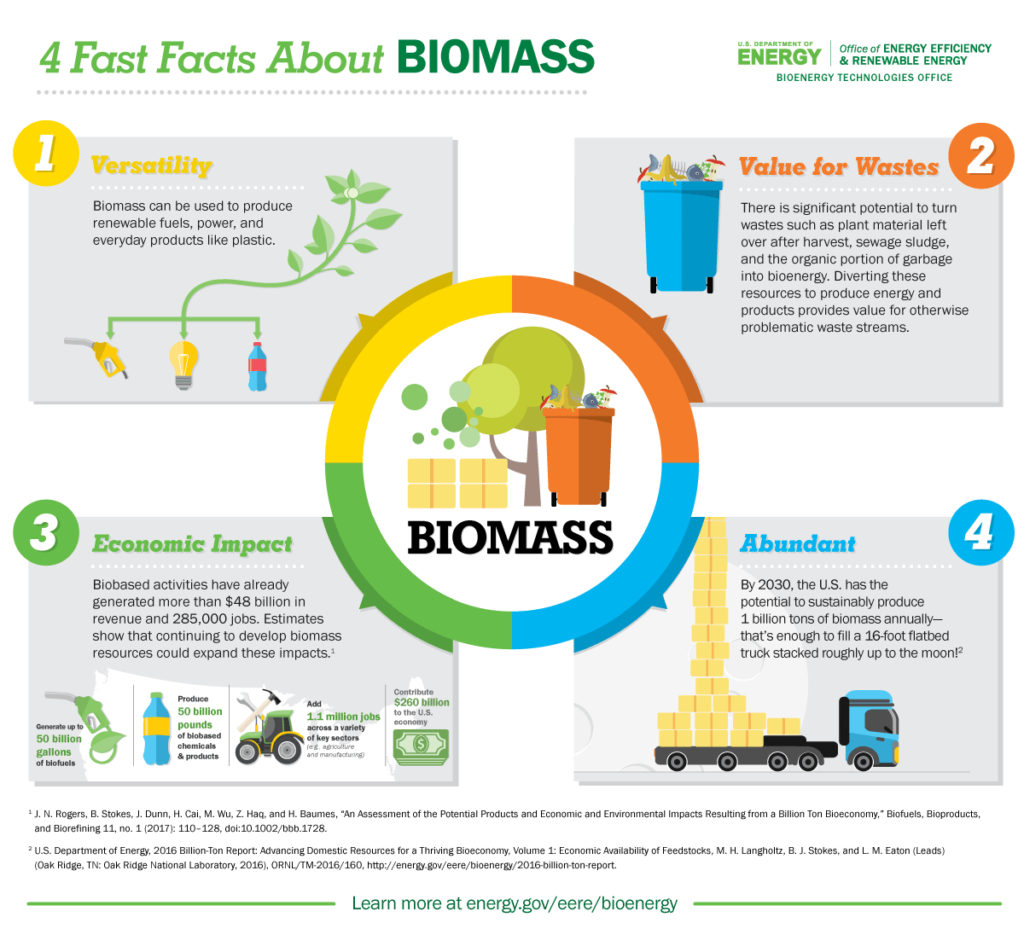Biomass is any organic material that can be converted into fuel. Types of Biomass currently include algae, corn, switchgrass, soybeans, sunflower, and canola. A better summary is “biomass is a potentially renewable energy source derived from plants or animals.”
Biomass energy is becoming a new industry sector as the government continues to pour money into universities and the private sector to develop future types of alternative fuels.
According to the U.S. Energy Administration, there are multiple potential uses for types of biomass energy. They include but are not limited to…
Examples of biomass and their uses for energy: Source: U.S. Energy Administration
- Wood and wood processing wastes—burned to heat buildings, to produce process heat in industry, and to generate electricity
- Agricultural crops and waste materials—burned as a fuel or converted to liquid biofuels
- Food, yard, and wood waste in the garbage—burned to generate electricity in power plants or converted to biogas in landfills
- Animal manure and human sewage—converted to biogas, which can be burned as a fuel

As the biomass industry grows into a new business sector, many types of biomass crops are being planted and new refining operations are springing up that employ many people. Research and Development in this area are very strong, and the government continues to fund the development of this promising field. The future for every type of biomass fuel looks promising.























